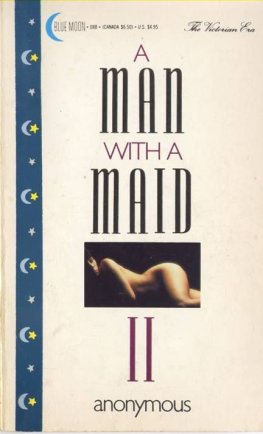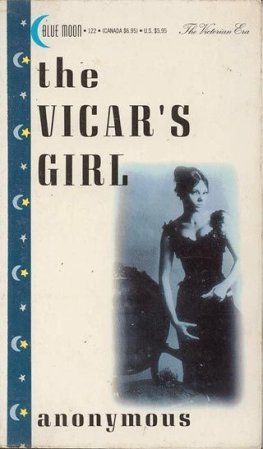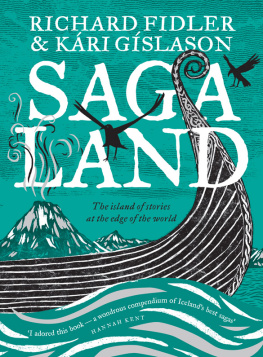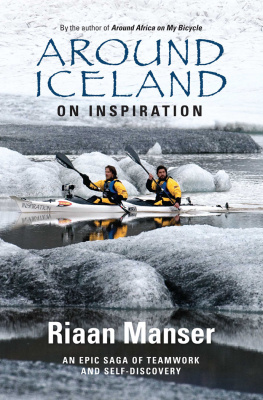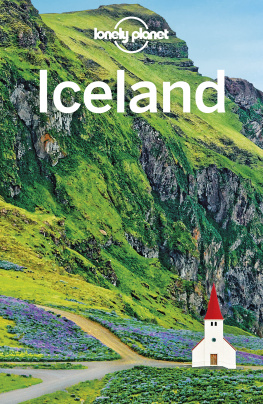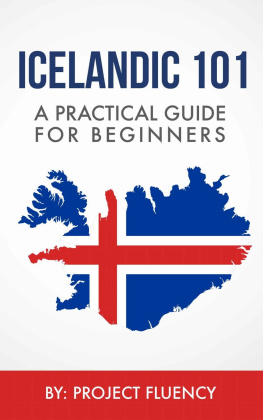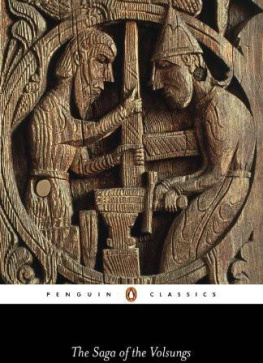
HRAFNKELS SAGA
ADVISORY EDITOR: BETTY RADICE
Nothing is known of the authorship of Hrafnkels Saga.
HERMANN PLSSON studied Icelandic at the University of Iceland and Celtic at University College, Dublin. He was Professor of Icelandic at the University of Edinburgh, where he taught from 1950 to 1988. He was the General Editor of the New Saga Library and the author of many books on the history and literature of medieval Iceland; his more recent publications include Legendary Fiction in Medieval Iceland (with Paul Edwards), Art and Ethics in Hrafnkels Saga and Vikings in Russia (with Paul Edwards). Hermann Plsson also translated (with Magnus Magnusson) Laxdaela Saga, Njals Saga, King Haralds Saga and The Vinland Sagas; and (with Paul Edwards) Egils Saga, Orkneyinga Saga, Eyrbyggja Saga and Seven Viking Romances for Penguin Classics. He died in 2002.
Hrafnkels Saga
and other Icelandic stories
Translated with an Introduction by
HERMANN PLSSON
PENGUIN BOOKS
PENGUIN BOOKS
Published by the Penguin Group
Penguin Books Ltd, 80 Strand, London WC2R 0RL , England
Penguin Group (USA) Inc., 375 Hudson Street, New York, New York 10014, USA
Penguin Books Australia Ltd, 250 Camberwell Road, Camberwell, Victoria 3124, Australia
Penguin Books Canada Ltd, 10 Alcorn Avenue, Toronto, Ontario, Canada M4V 3B2
Penguin Books India (P) Ltd, 11 Community Centre, Panchsheel Park, New Delhi 110 017, India
Penguin Group (NZ), cnr Airborne and Rosedale Roads, Albany, Auckland 1310, New Zealand
Penguin Books (South Africa) (Pty) Ltd, 24 Sturdee Avenue, Rosebank 2196, South Africa
Penguin Books Ltd, Registered Offices: 80 Strand, London WC2R 0RL , England
www.penguin.com
This translation first published 1971
Copyright Hermann Plsson, 1971
All rights reserved
Except in the United States of America, this book is sold subject to the condition that it shall not, by way of trade or otherwise, be lent, re-sold, hired out, or otherwise circulated without the publishers prior consent in any form of binding or cover other than that in which it is published and without a similar condition including this condition being imposed on the subsequent purchaser
ISBN: 9781101492048
INTRODUCTION
T HE stories in this volume date from the thirteenth century, the Golden Age of saga writing, and they exemplify the outstanding qualities of realistic fiction in medieval Iceland. To begin with, they were written in straightforward natural prose which suits their themes and modes admirably, as the stories deal with lifelike people in credible situations and artificial diction of any kind would have sounded discordant. They belong to a literary tradition which treated familiar themes in a factual manner and accorded the same kind of artistic care and integrity to everyday happenings on a local farm in Iceland as to foreign events of great historic moment. The authors of such stories were constantly aiming at verisimilitude; they made it their business to depict life as they had experienced it, or as they imagined it had actually been in the past. The matter-of-fact style of these stories has led some scholars into the mistaken belief that they are essentially traditional tales which originated mysteriously and miraculously soon after the alleged event (often in the tenth century or slightly later), to be then handed down orally from generation to generation until the scribes in the thirteenth century came along and copied them faithfully down on vellum. But modern scholarship has rejected this simplistic approach to the problem of saga genesis, and it has now been shown that these stories (and others of a similar type) were written in a thirteenth century idiom and by individual authors who were more concerned with moral and aesthetic truths than with historical facts, and who relied more on their own experiences and knowledge of human nature than on the vagaries of popular tradition. It has been pointed out that the realism of these stories is closely related to the purposes for which they were created, for although they have genuine historical settings and later came to be regarded as trustworthy records of actual events, they are nonetheless largely fictional and their relevance to the authors own times mattered perhaps more than their incidental information about the past. In other words, these stories were not only supposed to throw light on bygone times but also to show up certain facets of human nature and reveal significant strengths and weaknesses in human character. They were, purposively, written in order to conjure up vivid though not necessarily true pictures of the past, and at the same time to give the public a clearer vision of the world around them. An important objective of this literature was to encourage people to attain a better understanding of their neighbours and a truer knowledge of themselves, through studying the real and imagined fates of their forebears; a spirit of humanism pervades the narrative. However, this edificatory role was never allowed to get out of hand and dominate the literary art; giving aesthetic pleasure remained the story-writers primary aim and duty.
The seven stories in the present volume fall into two distinct groups. Three of them Hrafnkels Saga, Thorstein the Staff-Struck and Ale-Hood are set in the pastoral society of native Iceland, and the remaining four Hreidar the Fool, Halldor Snorrason, Auduns Story and Ivars Story describe the adventures of Icelandic poets and peasants at the royal courts of Norway and Denmark. The stories in this second group were probably written by authors who had never visited Scandinavia and had therefore no first-hand knowledge of the physical and social background to the incidents they describe, and these stories tell us very little about actual conditions in the countries involved. Their authors were only concerned with the conduct of the Icelandic hero and his relationship with the king he is visiting. The stories about Icelanders at home are very different in this respect. Every incident in them is seen against the backdrop of a familiar landscape, and the realities of Icelandic society are never lost sight of. Place names and other topographical details abound, and this genuineness of the setting contributes to the illusion that the story itself must deal with real events. This is particularly true of Hrafnkels Saga, which evokes some sharply focused landscape images. The depiction of Fljotsdale Moor is, I believe, unique in the entire saga literature. The moor is first described in general terms when Hrafnkel has settled at Adalbol:
Fljotsdale Moor is stony and boggy and difficult to travel over, yet Hrafnkel and his father used to visit each other frequently, for they were on very affectionate terms, Hallfred thought the usual path across the moor was much too rough, so he looked for an alternative route south of the hills which rise on the moor, and there he found a drier but slightly longer way. This path has been called Hallfredargata ever since, and it can only be used by those who are thoroughly familiar with the moor. (.)
Later in the story () the moor becomes the scene of action when Eyvind rides across it and Hrafnkel, who is thoroughly familiar with the moor, pursues him and eventually catches up with him and kills him. As we follow Eyvinds slow progress over the moor, a clear visual and tactile image of the route gradually emerges:
There is a swamp there, and one has to ride through watery slush, with the mud reaching up to the horses knee or mid-leg, sometimes even up to its belly; but underneath the mud the rock is very firm so theres no risk of sinking any deeper. West of this bog the terrain is very stony, and Eyvind and his men rode on to it.
Next page



